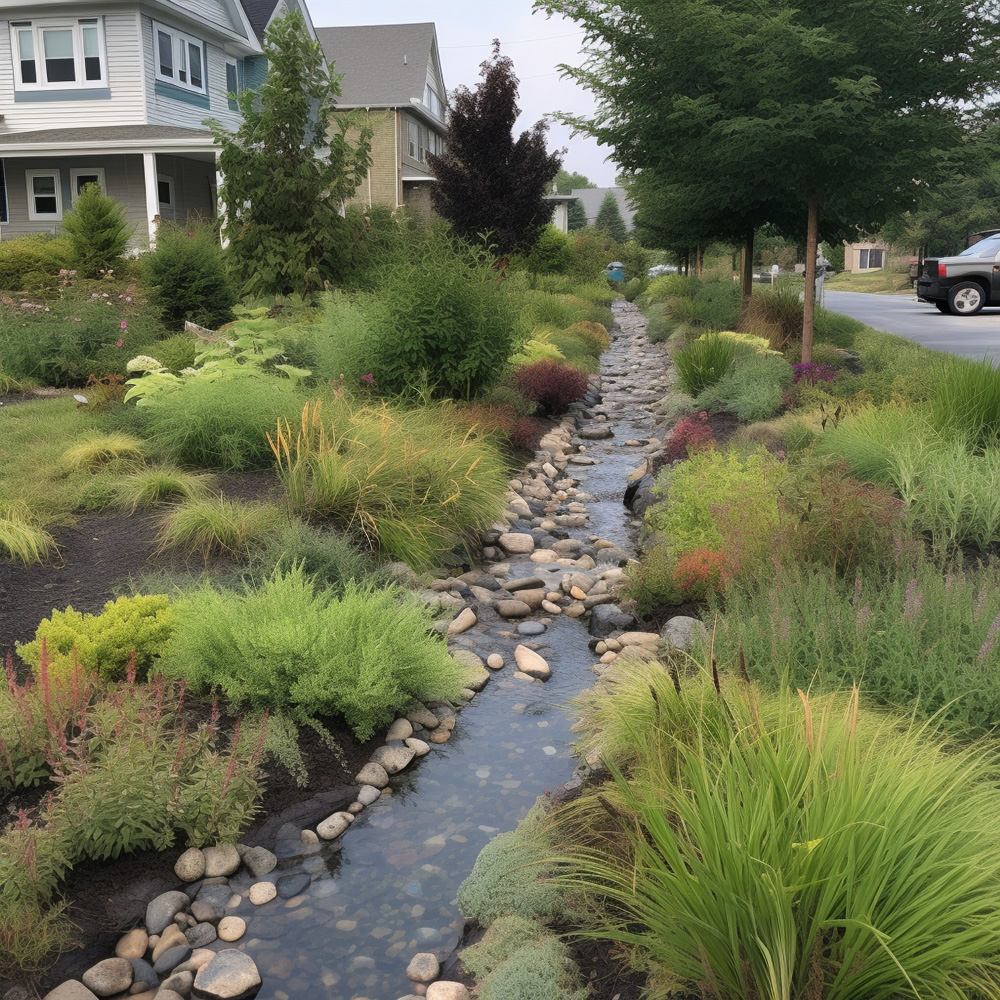
Bioswales: A Natural Tool in the War Against Urban Pollutants
Urban areas face an ongoing battle against water pollutants that wash from our sidewalks and roads into waterways throughout the year. While pollutants like tire dust, heavy metals, and organic contaminants pose year-round threats, the shift from fall to winter introduces unique seasonal challenges, including road salt and heating-related pollution. To combat this, more and more urban areas are turning to… Nature. Bioswales, the natural guardians of water quality, provide year-round and seasonal protection against pollutants while simultaneously enhancing the aesthetic and educational aspects of our urban environments.
Throughout the year, urban areas contend with heavy metals seeping into water bodies, organic contaminants carried by urban runoff, the menace of microplastics that were once trash and debris, and tire dust, a consistent contributor to both air and water pollution. However, when winter arrives, our urban areas and waterways contend with a new set of pollution challenges found in de-icing road salt that elevates salinity levels and corrodes infrastructure, increased construction activities leading to sediment runoff, and waste associated with heating units, from oil-based to wood. Without added controls, all of these pollutants can easily find their way into our environment.
In the quest to protect urban water bodies from this myriad of pollutants, bioswales emerge as nature's unsung heroes. In essence, bioswales are engineered channels that effectively manage stormwater runoff. Serving as natural barriers, bioswales capture and filter pollutants like road salt, tire dust, sediment, and more, significantly mitigating their adverse effects on water bodies. They also facilitate water infiltration into the soil, improving water quality and lessening the impact of pollutants throughout the year.
Consisting of well-draining, engineered soil that encourages water infiltration and pollutant removal, bioswales support plant growth and the natural breakdown of contaminants. These swales boast carefully selected vegetation, often native and deep-rooted, chosen for their proficiency in capturing and removing pollutants, stabilizing soil, and beautifying the urban landscape. Additionally, bioswales incorporate a sloping design to guide water flow, reducing the risk of erosion and enabling efficient filtration. Inlet and outlet structures ensure controlled water flow, allowing it sufficient time for natural treatment by the vegetation and soil.
Natural filters, bioswales excel at the removal of various pollutants from stormwater runoff, including sediment, heavy metals, oil and grease, nutrients, and certain bacteria. By slowing the flow of stormwater, these champions of the urban landscape reduce the risk of flooding during heavy rainfall events and contribute to groundwater recharge, benefiting local ecosystems.
Beyond their functional benefits, bioswales introduce aesthetic appeal and serve as educational tools, enlightening communities about sustainable stormwater management practices and the crucial significance of safeguarding our water resources. These green infrastructure initiatives are central to the creation of more resilient, eco-friendly, and aesthetically pleasing cities!

Waterborne Environmental, Inc. Hired to Create Online Dashboard That Tracks Nutrient Loss Across the State of Missouri
READ MORE

Swimming with Bacteria: Water Quality Concerns at the 2024 Paris Olympics
READ MORE

The Right Tool – Multidimensional Models
READ MORE



